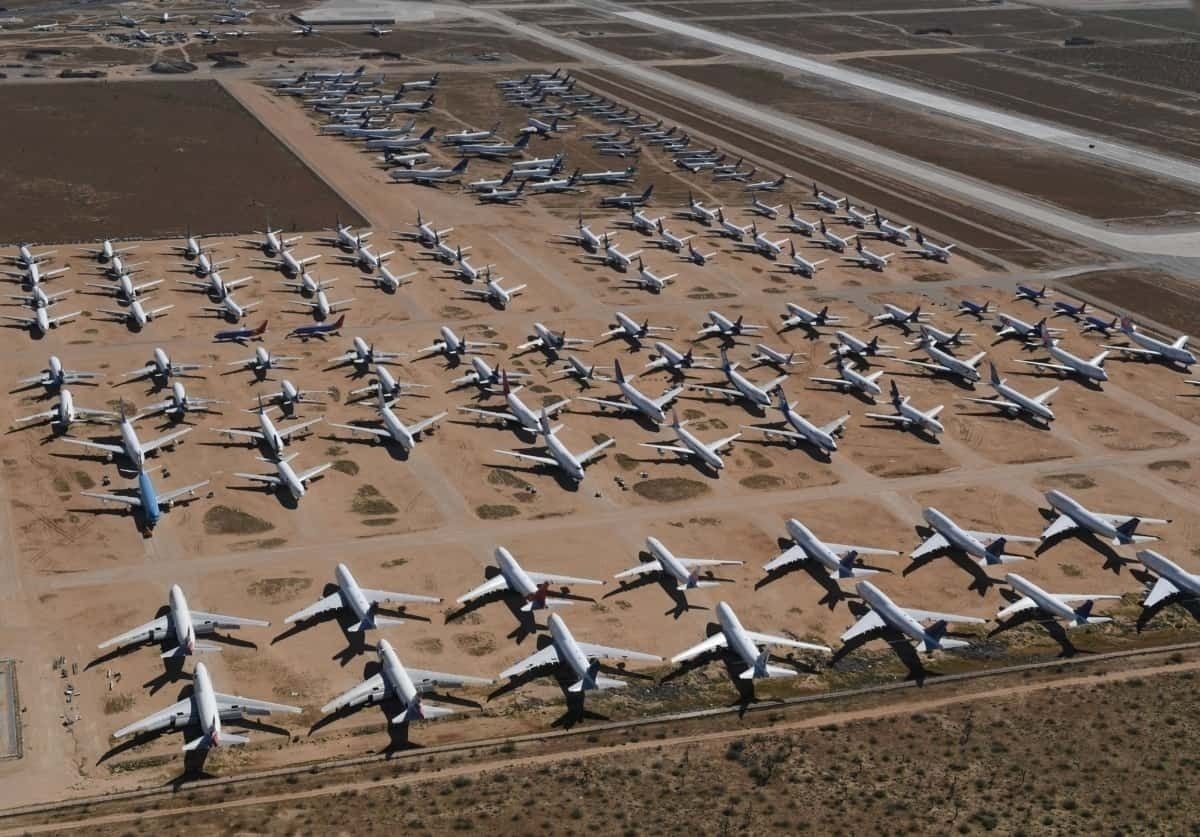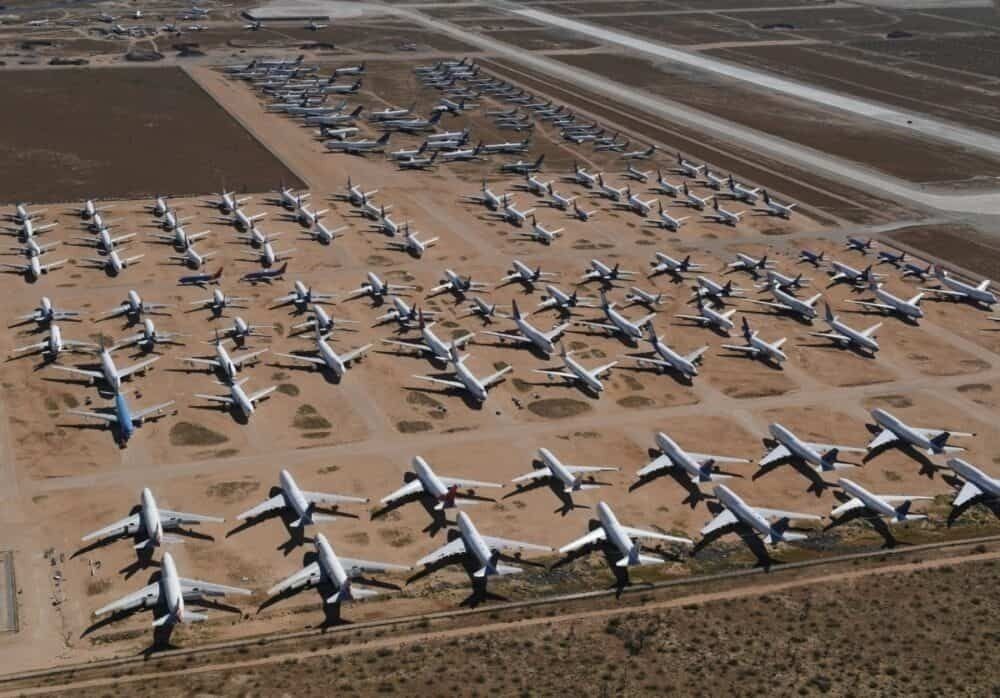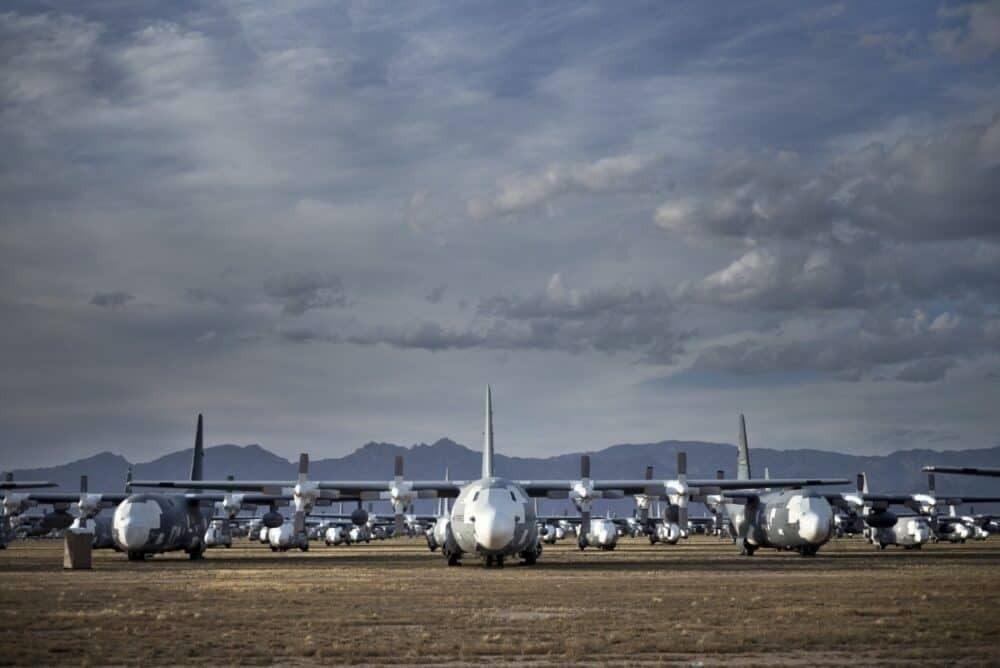An aircraft graveyard, also known as an aircraft boneyard, is where planes go to die. After a plane's final flight, most will be sent to these graveyards where they will be stored indefinitely. Some will be used for parts, scrapped, and a lucky few may even go back into service. As time and technology move on and more planes are retired, these graveyards are growing. We've taken a look at some of the largest aircraft graveyards in the US.
Warm climates make the best graveyards
The largest graveyard in the world is unsurprisingly in Tucson, Arizona. The warm, arid climate makes it ideal for storing planes without having to worry about humidity and weather damage. The Davis-Monthan Air Force Base primarily stores old military jets. Altogether, the site can store well over 4,000 aircraft. The base also offers tours for anyone wanting to look around.
Pinal Airpark (MZJ) in Marana, Arizona is another, slightly smaller, graveyard making use of the Arizona sun. Pinal Airpark's single 6,849ft runway has welcomed many commercial jets, including several Boeing 747-8s. The airpark has seen a sharp upswing in the number of stored aircraft due to the global pandemic.
Today, it is home to almost 300 aircraft. At the start of the outbreak, the park saw an average of five new arrivals per day. However, some of these will likely be returning to service as the airpark provides maintenance as well as short-term storage.
Mojave Air and Space Port in California houses the remains of approximately 1,000 commercial aircraft. Familiar names such as Atlas Air and Southern Air are sat in the Californian sun. The nearby research facilities mean most planes here have significant parts missing.
Nearby Southern California Logistics Airport is currently serving as a mass storage location for grounded Boeing 737 MAX jets. However, most of these should return to service. Southern California Logistics Airport also has space to disassemble 12 aircraft at a time as well as maintenance space for 20 aircraft in massive hangars.
Stay informed: Sign up for our daily aviation news digest.
Old military bases are popular graveyards
Kingman Airport in Arizona is another vast aircraft graveyard. Mainly housing regional jets for the likes of Delta Air Lines and United Airlines, it also has several old war jets. However, some of these have now moved to Davis-Monthan Air Force Base. There's also a couple of DHL DC-8s, making it a popular stop for people passing on Route 66. Alongside the 250 jets in storage, there are around 150 still in operation.
Yet another Arizona graveyard is found at Phoenix Goodyear Airport. The airport is storing a wide variety of aircraft from 737s, 777s, 757s, MD-11, and A340s. At its height, it stored over 5,000 aircraft. The airport isn't open to visitors, but as it still operates as a commercial hub to alleviate pressure on Phoenix International Airport, it's not hard to get a good look at the jets.
There is also a repair and maintenance facility. British aviation group CTC has invested $7 million to base a pilot training program at the airport, so its runway is relatively busy compared to other graveyards.
Roswell International Air Center is the graveyard of choice for American Airlines. There is an extensive collection of the carrier's old Boing 757s as well as the MD-80s. It's also temporarily home to some 737 MAX jets.
Roswell was originally a military base in World War II but now serves as a storage refurbishing facility for commercial jets as well as the potential location of several alien encounters. Currently, the center is storing around 200 aircraft. It is thought all the planes were made on planet earth.



